Rogue policeman who killed fellow cop linked to Police Paddocks shooting cold case
THE Police Paddocks shooting cold case has remained a mystery for 35 years — but now there’s a belief a rogue cop, responsible for another murder at the time, was also behind this one. LISTEN NOW.
Law & Order
Don't miss out on the headlines from Law & Order. Followed categories will be added to My News.
LINDSAY Forsythe died game, unlike the coward who killed him.
The killer had got nervous while lying in wait with a shotgun, a balaclava and bottles of beer, drinking to steel his nerve.
By the time Forsythe walked into the ambush at an empty house near Maldon, the shooter had drunk his way past the element of surprise. He managed to kill his lover’s husband — but not before Forsythe had drawn his police pistol and returned fire, three of his five shots hitting home.
THE LAST TEMPTATION OF LES SAMBA
Any chance the killer had of getting away with murdering a fellow policeman ended there. He was so badly injured he would have to go to hospital — and, with multiple .38 calibre bullet wounds, that could end only one way. He could hardly say he’d had an accident hunting rabbits.
So it was that cowardly cop Leigh Michael Lawson was charged with murdering courageous cop Lindsay James Forsythe. Also charged was the dead man’s scheming wife, Gayle, although she would end up being convicted only of manslaughter.
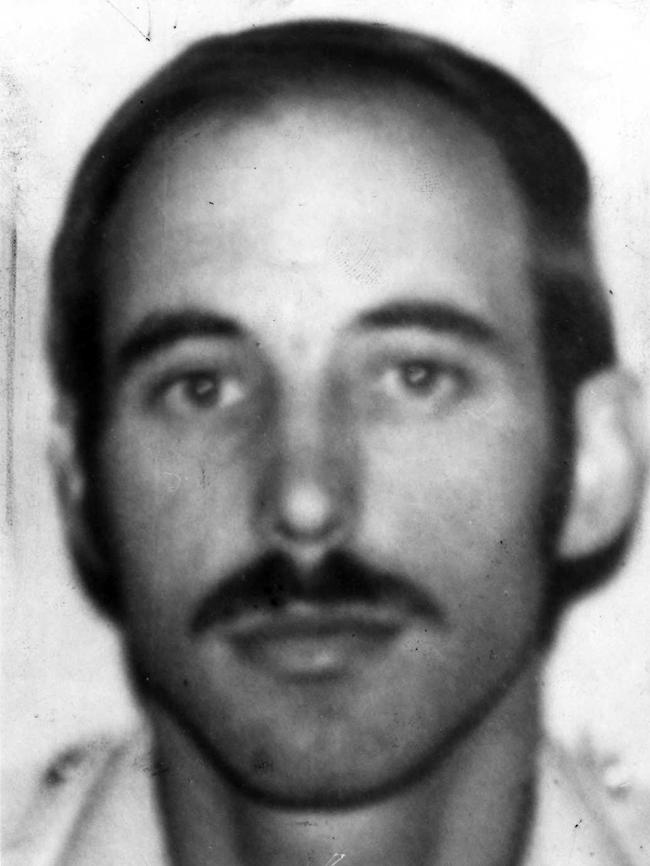
![1983. Funeral of murder victim Lindsay Forsythe.Senior Constable Lindsay James Forsythe.Maldon, Victoria.Gayle Forsythe. Leigh Lawson. Neg: 830627/110 [Sun 28/6/1983]](https://content.api.news/v3/images/bin/f75c8d5dd7df6b1937d5dfd5ce1c53f4?width=650)
Lawson would get life and deserved every day of it. Gayle Forsythe, who had set up her husband by sending him on a bogus errand, was out in less than three years. Her former in-laws might think she deserved more.
It looked to be another case of lust turned deadly, the sort of fatal attraction homicide detectives often see — even if, in this case, they at first assumed cop-killing criminals had set the trap, as would happen at Walsh St a few years later.
Thanks to the doomed Forsythe’s sharp shooting, the truth soon surfaced. But was it all the truth?
Now, 35 years later, former senior policemen have (independently of each other) told the Sunday Herald Sun that the rogue cop Lawson is a legitimate suspect for one of Australia’s most puzzling cold cases — a murder and abduction in the Police Paddocks reserve at Endeavour Hills a month before Forsythe’s murder.
SUBSCRIBE TO LIFE AND CRIMES VIA ITUNES
SUBSCRIBE TO LIFE AND CRIMES VIA RSS
TO Laurie Hamilton was the District Detective Inspector (DDI) of the police district based in Dandenong in 1983. The Police Paddocks murder and abduction was his joint responsibility with the homicide squad.
Hamilton would go on to become a Chief Superintendent before retiring after an unblemished career. But for 35 years, the Police Paddocks cold case has niggled him, especially since the reward was pushed from $50,000 to $500,000 in 2013.
It was strange, he thought, that the force and the state government was trumpeting the new reward when (in his long-held opinion) the only viable suspect was hiding in plain view — in a prison cell or visiting a parole officer.
Hamilton suspected that Leigh Lawson the killer cop was a repeat killer — and a multiple rapist. He still does. This is why.
Just four weeks before Lawson shot Forsythe at Maldon, Victorians woke up to the news a man had been shot dead and his lover abducted at the Police Paddocks, often used by couples as a “lovers’ lane”.
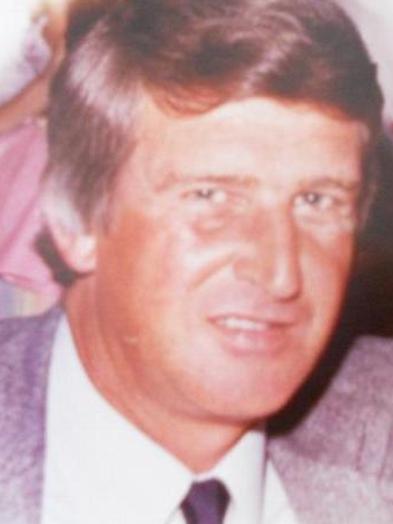
Like the Forsythe murder, it was a shocking crime with a whiff of scandal. Married man Rodney Mitchell, a 37-year-old father of two, was parked after dark with a young female friend when a gunman in a balaclava menaced them with a shotgun.
Mitchell, a robust type, took on the armed man and was shot twice. The killer then tied the terrified woman’s hands with twine he carried — similar to that used in an armed rape in the same location the previous month, and another rape three years earlier.
The panicked gunman jumped behind the wheel of Mitchell’s red Mitsubishi Sigma sedan beside the terrified woman. As he sped down the rough road towards Churchill Park Drive, she threw open the door and rolled out and down a rocky embankment, injuring herself. The Sigma kept going.
The badly-hurt woman crawled back to the road and was almost run over by the next car that came along. A good Samaritan took her to Dandenong hospital and called the police. She was admitted and would be there for some time, something the public did not know for several days.
Early next morning, the red Sigma was left parked near Caulfield Railway Station around 6.30am. A man in his mid-20s, about 180cm tall, with neat brown hair and a moustache, walked away from the car. Detectives assumed the offender would use the station, a hub that can take passengers three ways — to Dandenong, the city or the Frankston line.
It made sense the killer would want to return to Dandenong quickly to pick up whatever vehicle — car or motorbike — he had left around Endeavour Hills. But there is something else about Caulfield station that perhaps should have alerted investigators: it is walking distance, or two train stops, or a quick bus trip, from Leigh Lawson’s family home in Hobart St, Bentleigh.
What struck Hamilton (and possibly homicide investigators) was that the car was completely clean: no stray hairs or fingerprints, almost as if it had been cleaned overnight by someone who understood forensics.
The police had reports that the red Sigma had been seen speeding towards Cranbourne the previous evening and that a similar car had been around Berwick. But no one knew where it was in the 10 hours before arriving at Caulfield.
A week later, a Monday evening, a man in his mid-20s with neat brown hair and moustache turned up at Dandenong Hospital with a bunch of flowers and tried to see the woman who’d escaped from the abductor.
Without mentioning the woman by name (which was never made public) the visitor implied he was a close friend or relative. He was directed to the woman’s ward but did not see the patient. Instead, he left the hospital, possibly suspecting the receptionist had grown suspicious and called police. The receptionist was able to give a police artist a clear description of the man whose intentions were probably sinister.
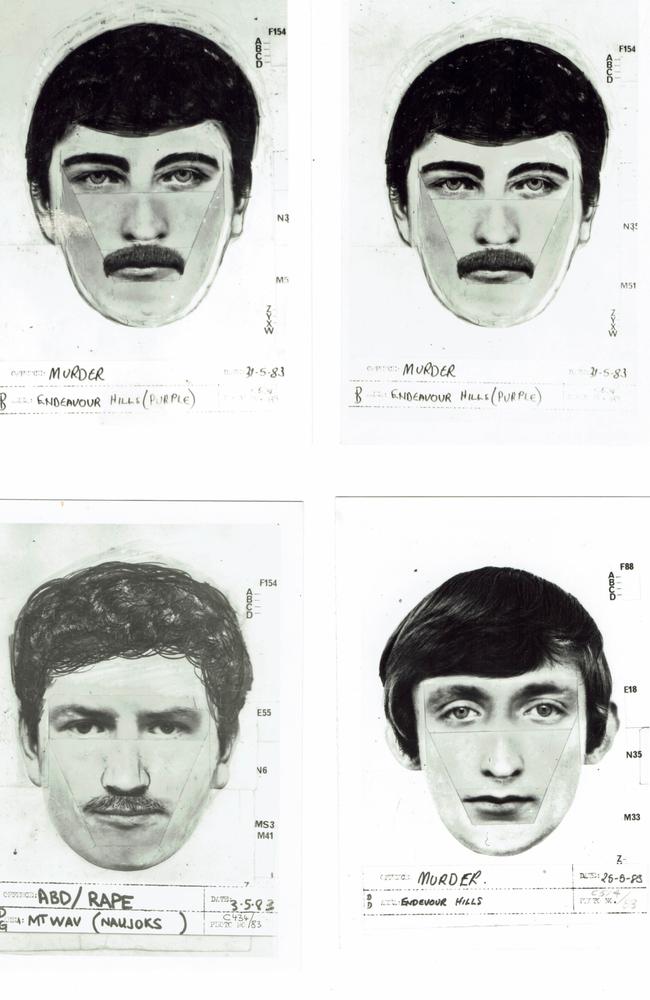
Like the man seen with the car at Caulfield, he was wearing blue trousers, a blue V-neck pullover and a black jacket. In other words, as Laurie Hamilton noted, he looked like many uniformed policemen did on their way to and from work — with hat, tie and jacket removed and a casual jacket worn over the uniform trousers.
None of this signified much until three weeks later, when Sen. Const. Lindsay Forsythe was shot dead at night by a rogue cop with a balaclava and shotgun.
It was another murder with a scandalous undertone of a sexual motive but this one shocked the nation — and the police force — because it was one policeman killing another.
When Hamilton saw photographs of Lawson he was struck how he resembled the unknown man wanted for the Police Paddocks killing. Lawson, 26, had brown hair and a moustache.
The only clue from the abducted woman was that the masked man had an Australian accent. This matched a description from the rape in the same location the previous month. The gunman-rapist had taken the wallet of the man he tied up on that occasion and, seeing only a $2 note in it, had tossed it down, saying “You need this more than I do, mate.”
His use of the word “mate” interested Hamilton. It seemed to him the offender was probably Australian-born and “Anglo”. He called the Traffic Operations Group, where Lawson had been stationed at the time of the April rape and the May shooting and abduction.
A workmate told Hamilton that Lawson had worked as normal on the dates in question but seemed nervous to be asked about Lawson’s work hours and habits.
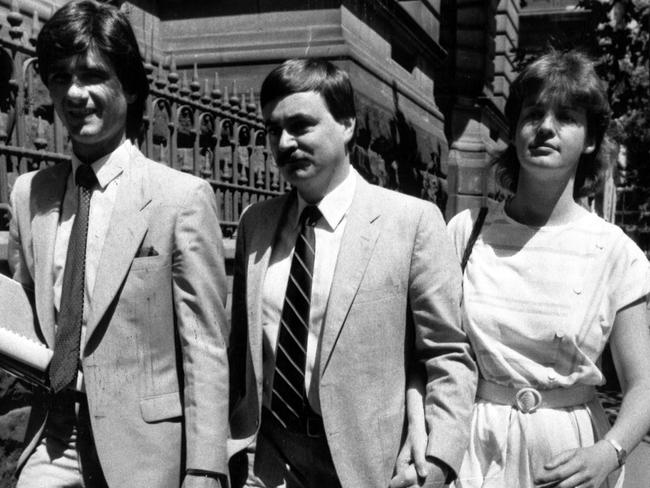
He did tell Hamilton two interesting things: Lawson had spoken of camping at the Police Paddocks when he was younger, and he habitually used the word “mate”.
Hamilton passed on his suspicions unofficially to a homicide detective senior sergeant but did not get a response.
When Lawson went to court for the Forsythe murder, photographs and court sketches of him were published that were strikingly similar to the photofit likeness of the man who had dumped the Sigma and tried to see the victim in hospital.
Meanwhile, Hamilton’s local detectives did what they could to keep the investigation alive but there was never a strong lead. The thin newspaper file on the case has half a dozen stories that went nowhere.
Three months after Mitchell’s murder, ace Herald reporter Owen Davies wrote an update saying that couples were still using the Police Paddocks as a “lovers lane” despite the potential danger from “a sex fiend who is known to have struck at least three times — killing once.”
Two months later the state posted a $50,000 reward.
SUBSCRIBE TO LIFE AND CRIMES VIA ITUNES
SUBSCRIBE TO LIFE AND CRIMES VIA RSS
Rodney Mitchell’s lover retold the story of the shooting and abduction to the Coroner’s Court in August, 1984. Six months later, after his Supreme Court trial, Lawson collapsed when the judge sentenced him to life. He was then 28 but with remissions for good behaviour would probably be paroled in his late 40s — young enough to start a new life.
Time passed. The murder gathered dust among other cold cases as two generations of homicide detectives chased hundreds of other violent deaths.
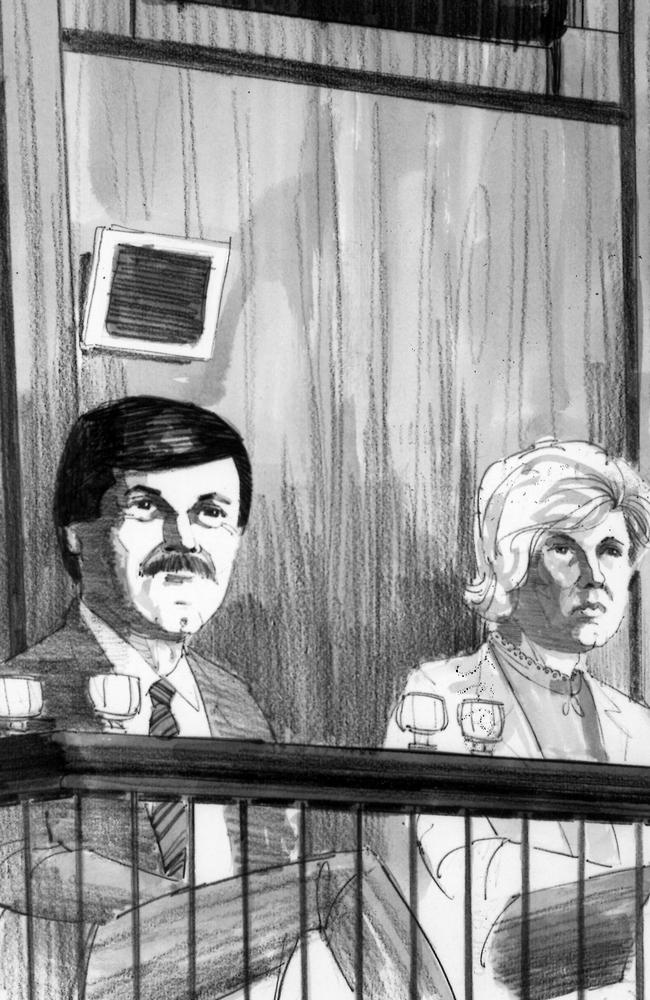
The world forgot the case, but Laurie Hamilton didn’t. Neither did Rod Mitchell’s aged mother, who lived into her 90s hoping to see her son’s murder solved. She didn’t get her wish.
When the $500,000 reward was announced in 2013, Hamilton contacted the homicide squad to relay his lasting suspicion of Lawson. Cold case investigators spoke to the female victim — now interstate — and to Lawson and the former officer who had given him an alibi. They drew a blank.
Hamilton heard that when detectives questioned Lawson, he replied: “I’m a killer, not a rapist.” Which is hardly surprising, even if he is guilty.
More surprising, maybe, is that former homicide investigators concede there was never a better suspect than Lawson. Many former detectives are now dead, but survivors do not contradict former Assistant Commissioner Noel Ashby’s support of Hamilton’s views.
Ashby says that in the 1980s it was an accepted tactic to concentrate on prosecuting the most provable charge to get a conviction rather than risk diluting the prosecution by pursuing other charges against the accused if evidence of those was weaker.
There are many examples — including “a page full” of other charges dropped against Peter Allen Reid once he was convicted of shooting motorcycle cop Stephen Henry in 1982.
But the strongest example involves the prosecution of Barry Gordon Harding for the barbaric sex murder of three-year-old Kim Anh Ho in the Richmond Housing Commission flats in 1981.
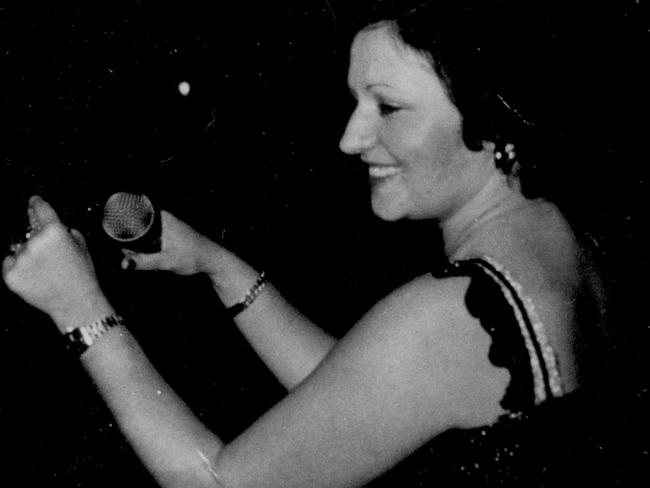
VICTORIA’S MOST NOTORIOUS CRIME MYSTERIES
Harding’s unspeakable crime was not the only one in the same flats that year. A young woman, Haroula Kipouridou, was butchered and her body defiled. Harding was the obvious and only suspect but, in the absence of DNA and other scientific and technical evidence now routinely used to convict murderers, the case against him was not as strong as for Kim Anh Ho’s murder.
Harding served his time for the Kim Anh Ho murder and, in a rare example of poetic justice, was killed by a car while trying to hitchhike, drunk, on a freeway in 1995.
Ashby makes the point that without DNA, telephone intercepts, security camera footage, traffic cameras and mobile telephone triangulation, the killer of Jill Meagher would never have been caught, let alone convicted.
Most of the detectives who worked on the Rodney Mitchell case are now dead. But one, former homicide sergeant Bob Snell, told the Sunday Herald Sun that although he had never heard Leigh Lawson was a suspect, it was “quite possible” he should have been.
“It makes sense,” Snell says. “I wish Laurie Hamilton had called me (in 1983).”
Meanwhile, someone out there has 500,000 reasons to remember anything that could solve Rodney Mitchell’s murder.
HOW DO GUN THIEVES KNOW JUST WHERE TO STRIKE?

